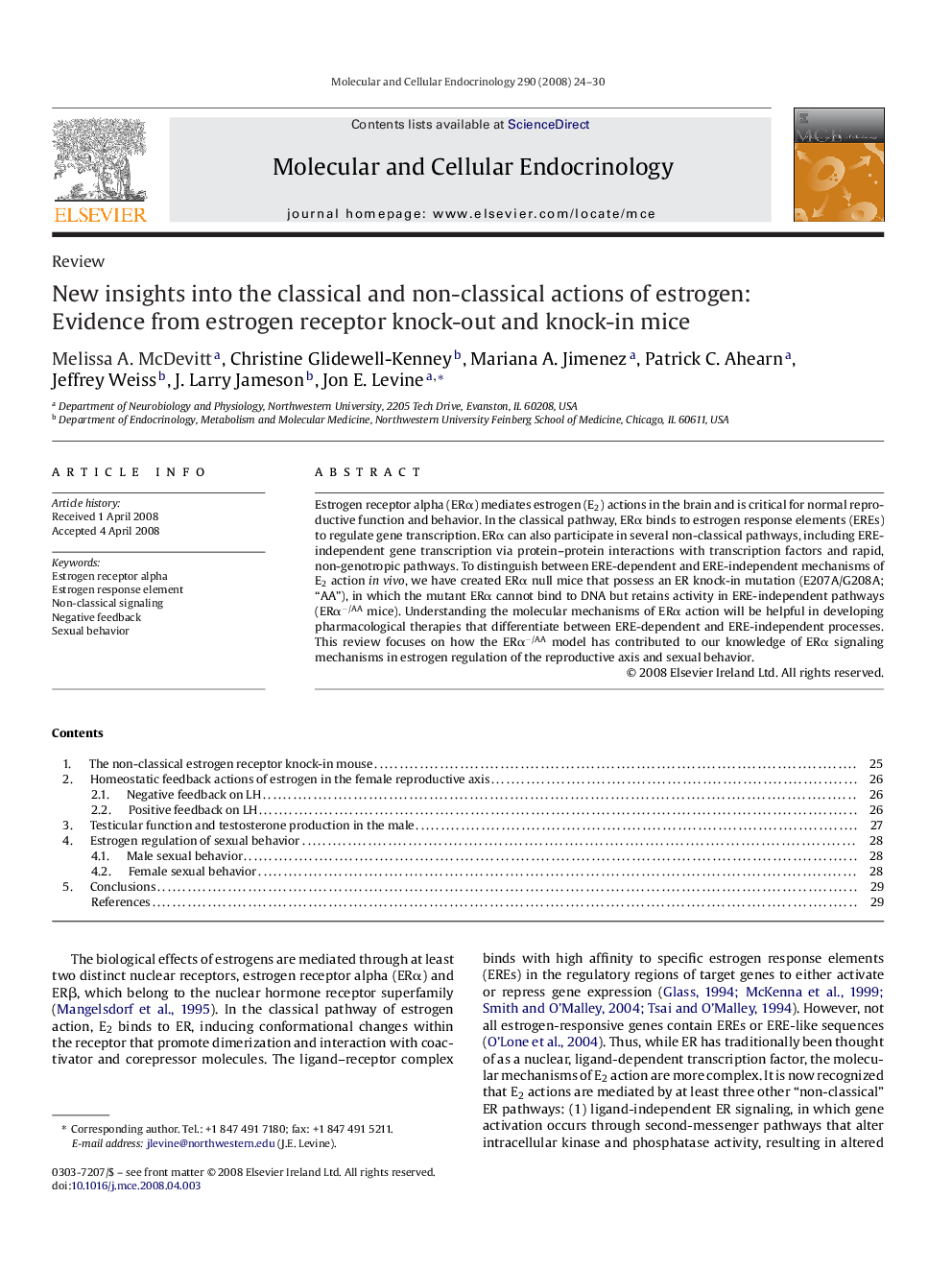| Article ID | Journal | Published Year | Pages | File Type |
|---|---|---|---|---|
| 2197527 | Molecular and Cellular Endocrinology | 2008 | 7 Pages |
Estrogen receptor alpha (ERα) mediates estrogen (E2) actions in the brain and is critical for normal reproductive function and behavior. In the classical pathway, ERα binds to estrogen response elements (EREs) to regulate gene transcription. ERα can also participate in several non-classical pathways, including ERE-independent gene transcription via protein–protein interactions with transcription factors and rapid, non-genotropic pathways. To distinguish between ERE-dependent and ERE-independent mechanisms of E2 action in vivo, we have created ERα null mice that possess an ER knock-in mutation (E207A/G208A; “AA”), in which the mutant ERα cannot bind to DNA but retains activity in ERE-independent pathways (ERα−/AA mice). Understanding the molecular mechanisms of ERα action will be helpful in developing pharmacological therapies that differentiate between ERE-dependent and ERE-independent processes. This review focuses on how the ERα−/AA model has contributed to our knowledge of ERα signaling mechanisms in estrogen regulation of the reproductive axis and sexual behavior.
